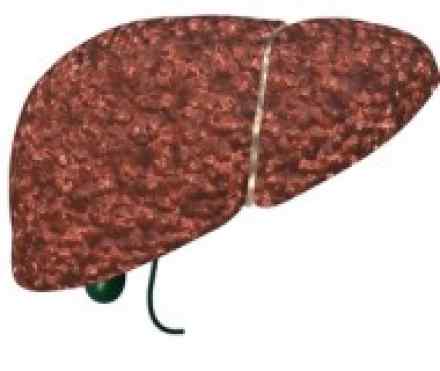
What is it?
Liver cancer is cancer that begins in the cells of your liver. Your liver is a football-sized organ that sits in the upper right portion of your abdomen, beneath your diaphragm and above your stomach. In the Ireland, most cancer that occurs in the liver begins in another area of the body, such as the colon, lung or breast. Doctors call this metastatic cancer, rather than liver cancer. And this type of cancer is named after the organ in which it began — such as metastatic colon cancer to describe cancer that begins in the colon and spreads to the liver.
Symptoms
Most people don't have signs and symptoms in the early stages of primary liver cancer. When symptoms do appear, they may include:
- Losing weight without trying
- Loss of appetite
- Upper abdominal pain
- Nausea and vomiting
- General weakness and fatigue
- An enlarged liver
- Abdominal swelling
- Yellow discoloration of your skin and the whites of your eyes (jaundice)
Causes
It's not clear what causes most cases of liver cancer. But in some cases, the cause is known. For instance, chronic infection with certain hepatitis viruses can cause liver cancer.
Liver cancer occurs when liver cells develop changes (mutations) in their DNA — the material that provides instructions for every chemical process in your body. DNA mutations cause changes in these instructions. One result is that cells may begin to grow out of control and eventually form a tumor — a mass of malignant cells.
Types of liver cancer
Primary liver cancer, which begins in the cells of the liver, is divided into different types based on the kind of cells that become cancerous. Types include:
- Hepatocellular carcinoma (HCC). This is the most common form of primary liver cancer in both children and adults. It starts in the hepatocytes, the main type of liver cell.
- Cholangiocarcinoma. This type of cancer begins in the small tube-like bile ducts within the liver. This type of cancer is sometimes called bile duct cancer.
- Hepatoblastoma. This rare type of liver cancer affects children younger than 4 years of age. Most children with hepatoblastoma can be successfully treated.
- Angiosarcoma or hemangiosarcoma. These rare cancers begin in the blood vessels of the liver and grow very quickly.
Risk factors
Factors that increase the risk of primary liver cancer include:
- Your sex. Men are more likely to develop liver cancer than are women.
- Your age. In North America, Europe and Australia, liver cancer most commonly affects older adults. In developing countries of Asia and Africa, liver cancer diagnosis tends to occur at a younger age — between 20 and 50.
- Chronic infection with HBV or HCV. Chronic infection with hepatitis B virus (HBV) or hepatitis C virus (HCV) increases your risk of liver cancer.
- Cirrhosis. This progressive and irreversible condition causes scar tissue to form in your liver and increases your chances of developing liver cancer.
- Certain inherited liver diseases. Liver diseases that can increase the risk of liver cancer include haemochromatosis, autoimmune hepatitis and Wilson's disease.
- Diabetes. People with this blood sugar disorder have a greater risk of liver cancer than do people who don't have diabetes.
- Nonalcoholic fatty liver disease. An accumulation of fat in the liver increases the risk of liver cancer.
- Exposure to aflatoxins. Consuming foods contaminated with fungi that produce aflatoxins greatly increases the risk of liver cancer. Crops such as corn and peanuts can become contaminated with aflatoxins.
- Excessive alcohol consumption. Consuming more than a moderate amount of alcohol can lead to irreversible liver damage and increase your risk of liver cancer.
- Obesity. Having an unhealthy body mass index increases the risk of liver cancer.
Diagnosis
Diagnosing liver cancer
Tests and procedures used to diagnose liver cancer include:
- Blood tests. Blood tests may reveal liver function abnormalities.
- Imaging tests. Your doctor may recommend imaging tests, such as an ultrasound, computerized tomography (CT) scan and magnetic resonance imaging (MRI).
- Removing a sample of liver tissue for testing. During a liver biopsy, a sample of tissue is removed from your liver and examined under a microscope. Your doctor may insert a thin needle through your skin and into your liver to obtain a tissue sample. Liver biopsy carries a risk of bleeding, bruising and infection.
Determining the extent of the liver cancer
Once cancer is diagnosed, your doctor will work to determine the extent (stage) of the liver cancer. Staging tests help determine the size and location of cancer and whether it has spread. Imaging tests used to stage liver cancer include CT, MRI, chest X-ray and bone scan.
The stages of liver cancer are:
- Stage I. At this stage, liver cancer is a single tumor confined to the liver that hasn't grown to invade any blood vessels.
- Stage II. Liver cancer at this stage can be a single tumour that has grown to invade nearby blood vessels, or it can be multiple small tumours in the liver.
- Stage III. This stage may indicate that the cancer is composed of several larger tumours. Or cancer may be one large tumour that has grown to invade the liver's main veins or to invade nearby structures, such as the gallbladder.
- Stage IV. At this stage, liver cancer has spread beyond the liver to other areas of the body.
References
http://www.nhs.uk/conditions/Cancer-of-the-liver/Pages/Introduction.aspx
https://www.hse.ie/eng/health/az/C/Cancer,-liver/Treating-liver-cancer.html
http://www.healthline.com/health/liver-cancer#Overview1
http://www.cdc.gov/cancer/liver/




